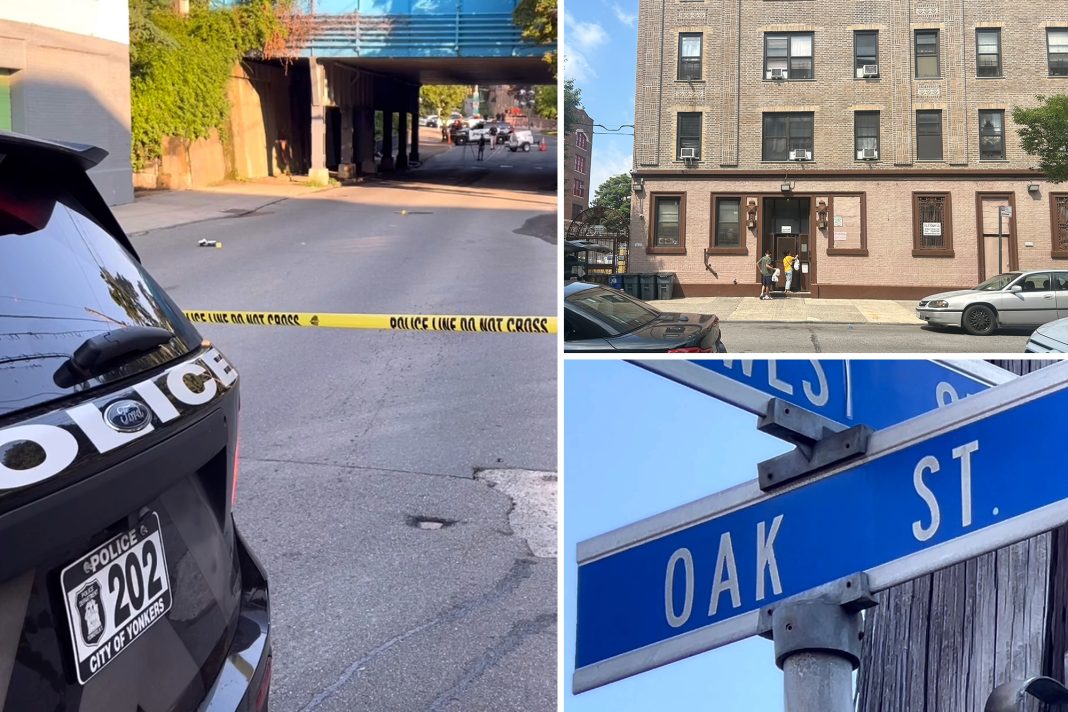In a chilling case that has gripped the Bronx, 40-year-old Muhammad Aadil has been charged with the murder of 46-year-old Lutalo Henderson, whose dismembered body was discovered in horrific circumstances. The investigation into this gruesome crime has revealed a web of violence, drug involvement, and a disturbing journey of human remains across New York City.
The investigation began on August 5 when firefighters stumbled upon a burning shopping cart near the Oak Street Bridge in Yonkers. What they uncovered was a lifeless body lying on the sidewalk, igniting a series of inquiries that would soon lead authorities to a Bronx apartment. Inside, police found severed hands protruding from a bleach-filled crockpot, a scene that would haunt investigators for days to come. Sources indicate that a black bag located in the freezer might have contained further remains, underscoring the brutality of the crime.
Aadil, a man with a lengthy criminal record that includes 11 prior arrests and multiple stints in state prison, was swiftly linked to the case. His history suggests a pattern of criminal behavior, primarily revolving around drug-related offenses. His most recent incarceration spanned from 2015 to 2019, with parole expiring only in February 2023. The timing raises questions about his potential for rehabilitation and societal reintegration, especially considering the nature of his latest charges, which include second-degree murder, first-degree manslaughter, criminal possession of a controlled substance, concealment of a human corpse, and criminal possession of a firearm.
The connection between Aadil and Henderson remains murky. While both resided at the same address, police have yet to confirm the nature of their relationship. Neighbors described Henderson as a long-time resident who often had roommates, painting a picture of a man who may have been ensnared in the complex social dynamics of urban living.
What makes this case particularly disturbing is the suggestion that the remains were transported from the Bronx to Yonkers by two individuals via a Metro-North train. This detail not only adds an element of premeditation but also raises questions about how such a heinous act could occur in a bustling urban environment and go unnoticed until the aftermath.
Experts in criminology suggest that such extreme acts of violence often stem from deep-seated issues, including substance abuse and socio-economic factors. Aadil’s previous run-ins with the law hint at a life marked by challenges, yet the leap from drug offenses to murder highlights a troubling escalation in criminal behavior.
As the investigation continues, authorities have not confirmed whether they are seeking additional suspects, nor have they clarified the sequence of events leading up to Henderson’s death. The community is left grappling with the implications of such violence occurring in their midst, as they await further answers and justice for Henderson.
In the broader context, this case serves as a grim reminder of the complexities surrounding crime, rehabilitation, and community safety. It underscores the urgent need for effective interventions that address not just the symptoms of criminal behavior but also the underlying issues that lead individuals down such dark paths. As the Bronx processes this tragedy, questions linger about the efficacy of support systems for those entangled in cycles of crime and violence—an issue that continues to resonate across urban America.

